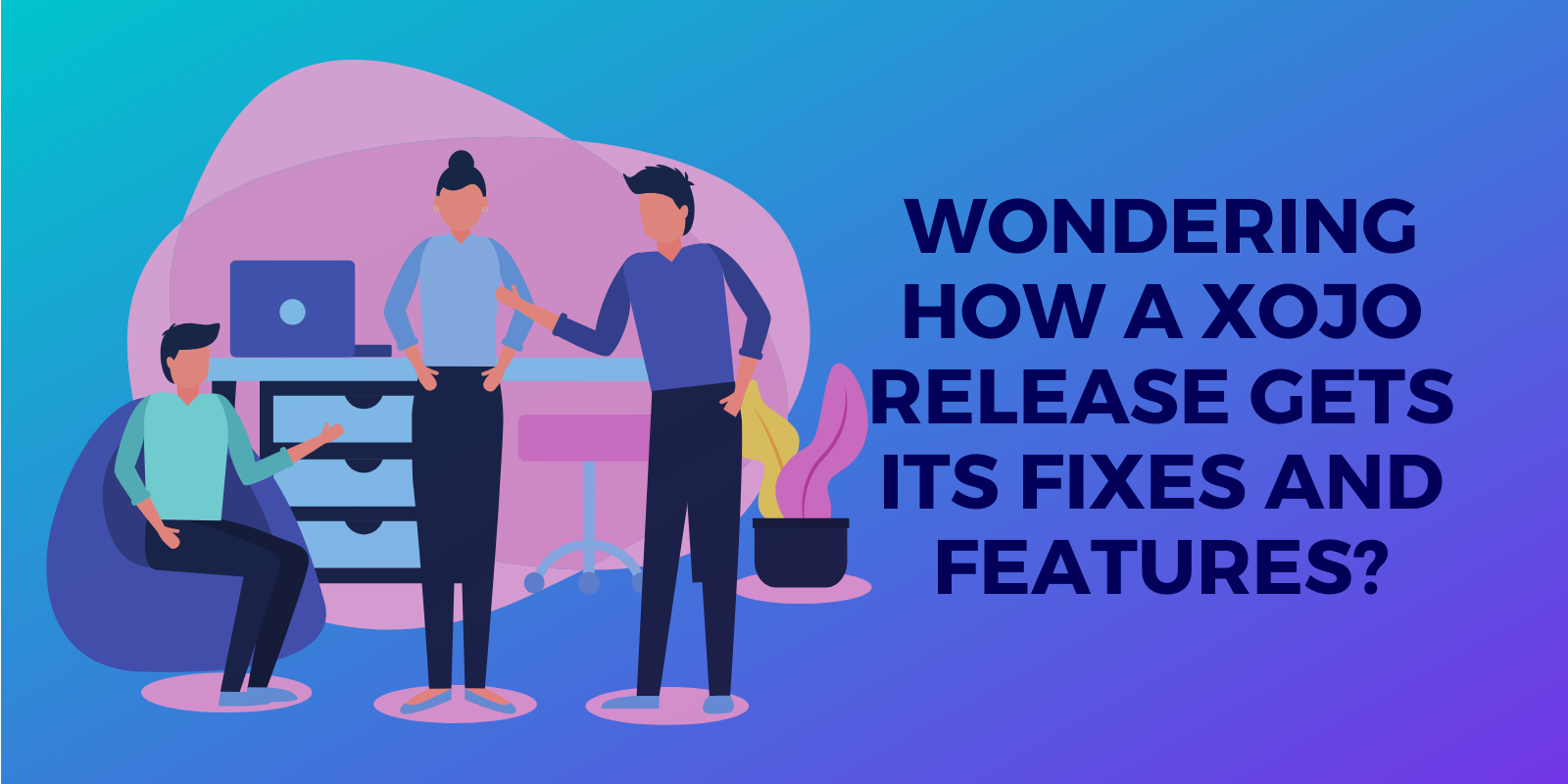Learn how to retrieve the data of an API over a CURL connection and evaluate the JSON to build a weather station. This example uses a free key from the OpenWeather API. The API returns a JSON text containing information such as current weather description, current temperature, pressure, humidity and many more.
Comments closedXojo Programming Blog Posts
You’ve probably wondered how we decide what features and bugs fixes will be added in any given Xojo release. What we care about most is what will have the greatest benefit to users and what will it cost to provide that benefit. If you have reported a bug or need a workaround for an issue, Xojo wants to help you find a solution so reach out to us via Feedback, or email our support team, or on the Forums.
Comments closedSometimes we need to deal with temporary FolderItem instances, and in those cases it would be great to not have to care about when they get out of scope in order to delete them. Wouldn’t it be great to automate that task? Continue reading and you’ll see how easy it is to implement this!
Comments closedThe in-person element of our conference is a huge benefit of attending and it’s something you don’t get from a virtual event. COVID restrictions continue to be in place for both travel to the UK and in-person events and there’s a lot of uncertainty of what the coming months will look like. As a result, we have made the decision to move the conference to later next year, instead of doing a virtual conference in the spring. So get ready to get re-excited about XDC – mark your calendar for October 13-15, 2021 for XDC London !
Comments closedRecently I needed to update an old Web project that used a Microsoft SQL Server Database as its data source. This application is running as a service on a Windows machine and is for internal use only. I decided when updating the project, I would also update to API 2.0 database commands using Xojo 2019 R3.2 and I would like to share some of those code changes with you.
Comments closedAmong the many new features introduced by the Web Framework 2.0, one of my favourites is the new WebChart class. Based on Chart.js, this class offers a total of eight chart types you can create and use really easily in your projects; including the Line, Bar, Pie or Doughnut chart types among others.
Comments closedAre there bumps in the road? Sure! Are they worth barreling into at full speed? Oh yeah! Bring it on Web 2.0, I’m ready!
Comments closedBased on recent conversations with a couple Xojo users, here are a few quick tips for uploading and working with SQLite and MySQL databases on Xojo Cloud.
If you aren’t already familiar with Xojo Cloud, it’s simple, secure, maintenance-free hosting for your Xojo web apps.
Comments closedXojo 2020r1 upgraded to SQLite 3.31.1. Notable new features include PRAGMA lists and generated columns aka computed columns!
Comments closed
